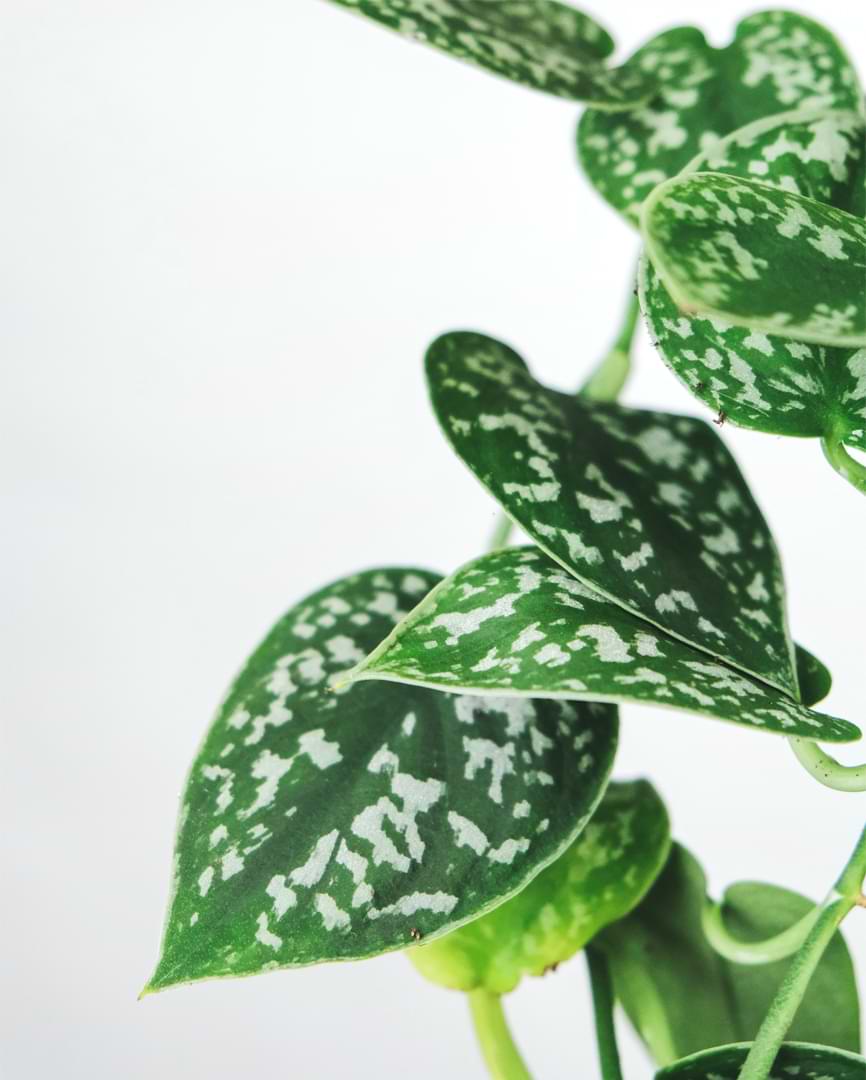Around here, we’re big fans of pothos plants! After all, pothos varieties are beautiful, easygoing, and some of the most beginner-friendly houseplants out there.
Pothos also comes in many different varieties. If you take a trip to any local nursery or home improvement store, you’ll notice several different pothos varieties that come in dark green, yellow, white, and even neon green.
Which pothos variety is the right plant for you? Let’s take a look at some of the most common (and uncommon) types of pothos varieties and how to care for them so you can choose your favorite low-maintenance trailing houseplant!
Table of Contents
Our Favorite Pothos Varieties:
Jade pothos
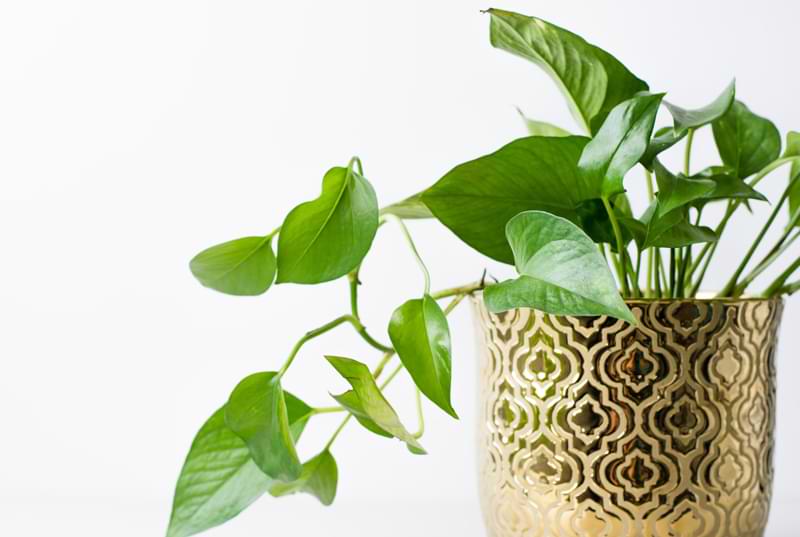
This is the most common kind of pothos plant you’ll find in most garden stores. It has deep-green, heart-shaped leaves that may have a little yellow variegation. It grows quickly and the leaves can get fairly large. You can train it to grow up a moss pole or let it trail off a shelf (this applies to most pothos varieties such as jade and neon as well).
You may need to repot this variety once or twice a year and prune regularly to manage the size. When you prune, don’t forget to propagate the cuttings and give them as gifts!
Neon Pothos

This pothos variety is becoming very popular for its stunning solid neon-green leaves that give it its name! Neon pothos is easy to identify and adds a fun pop of bright color to your plant collection. This plant is easy to find and requires the same care as normal jade or golden pothos, but it appreciates a bit more light. (General pothos rule: The deeper green the leaves are, the less light it needs to be healthy!)
Golden pothos

Another popular variety, golden pothos is known (and named) for its large deep-green and yellow variegated leaves. Golden pothos is easy to find and just as easy to care for.
Read our guide to caring for golden pothos here.
Marble queen pothos
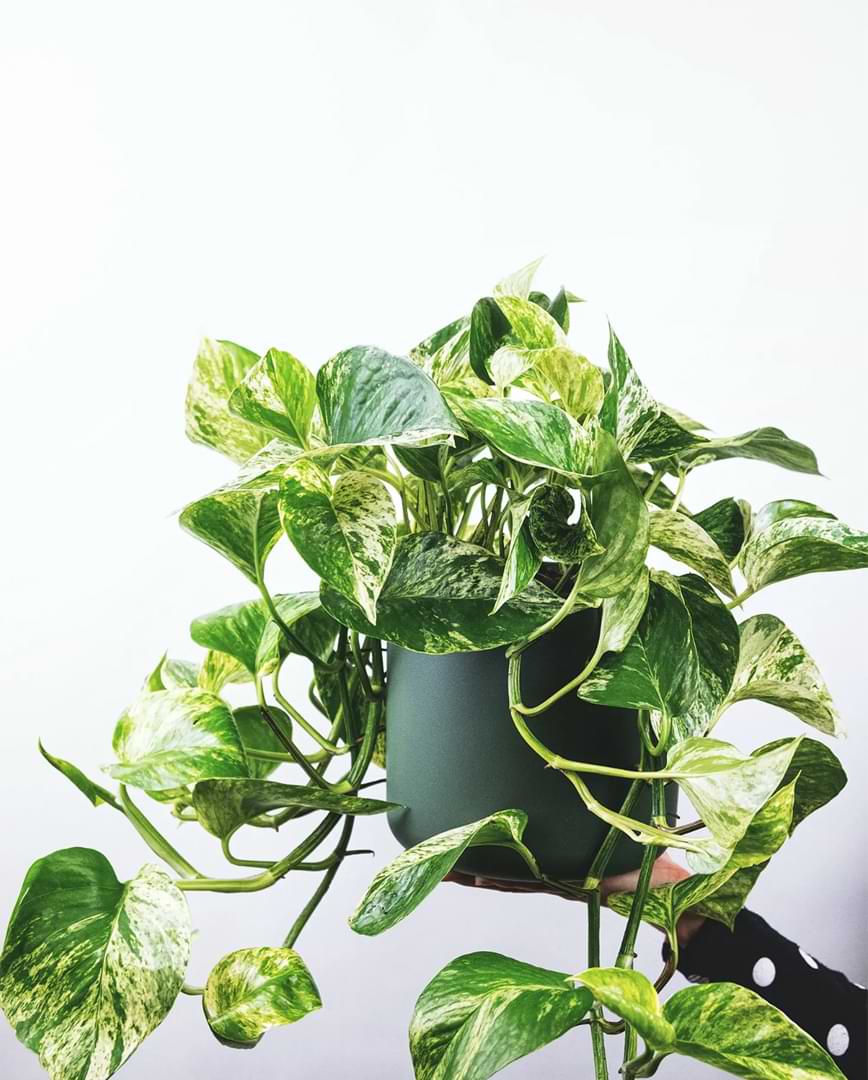
This variety has striking white or cream and green variegated leaves that may be more white than green! Some leaves may be almost completely white with only a few green specks. The green and white tend to appear woven or marbled together instead of arranging themselves into chunky blocks of color.
Because the leaves contain less chlorophyll (the substance that gives plants their green color), this variety grows more slowly than other types of pothos. Make sure to keep this variety in bright but indirect sunlight to preserve the variegation and provide enough energy, since highly variegated plants do not photosynthesize as easily as deep-green plants.
Manjula pothos
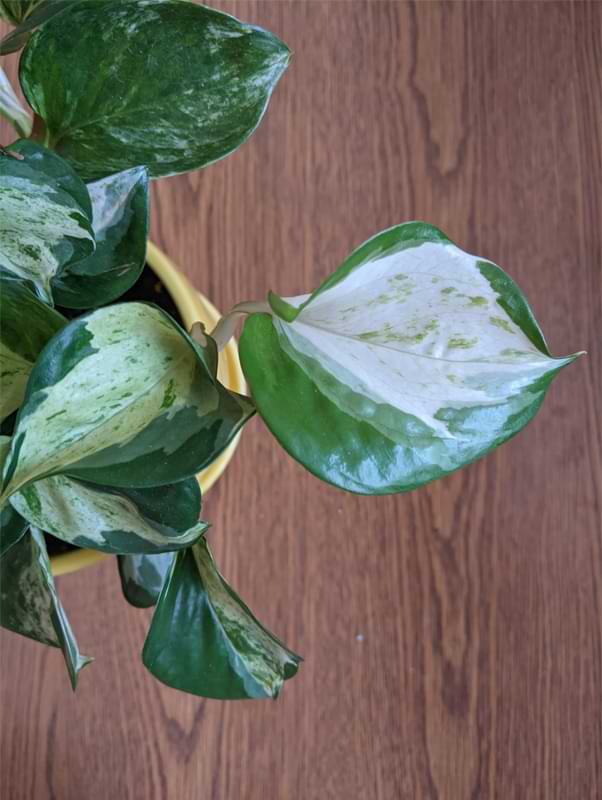
This is another variegated pothos plant with beautiful, heart-shaped leaves of dark and light green, white, cream, and even silver!
The variegation on this plant tends to be more “chunky,” though there may also be speckling. The leaves also have curved edges instead of laying more flat like other pothos plants. This variety is actually patented and originated from the University of Florida. You won’t find this one in the wild, but it’s still one of the most stunning varieties in our opinion!
Manjula pothos isn’t as common in stores, but you should be able to find one in an online search or in a store with a wide variety. Since it is so variegated, it needs as much bright, indirect light as you can give it without placing it in direct sunlight to promote maximum variegation.
Satin pothos
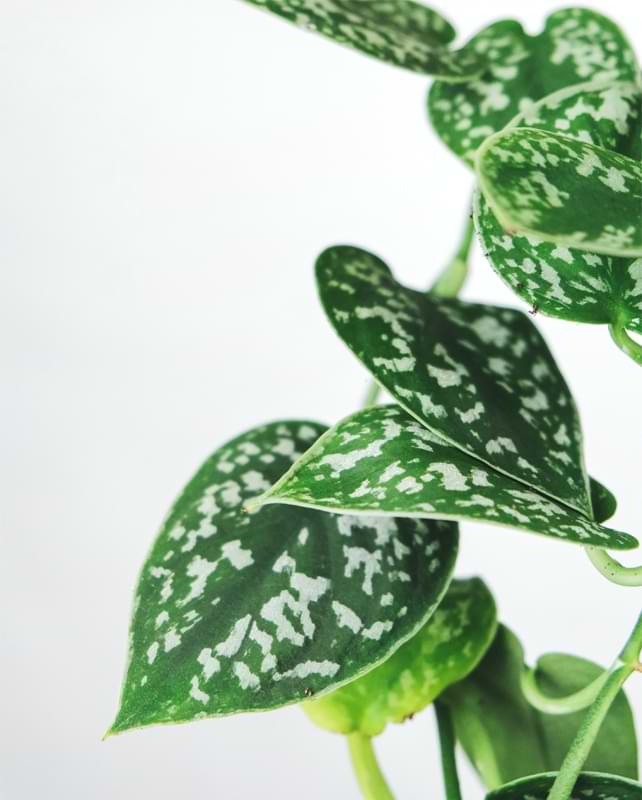
Also called silver pothos, this variety sports slightly oblong, deep-green, heart-shaped leaves with silver or light green spots or splashes. Satin pothos is slightly smaller than other pothos varieties, but it will still climb a trellis or moss pole or trail beautifully out of the pot.
Fun fact: Satin pothos isn’t actually a true pothos at all! Pothos plants belong to the Epipremnum aureum genus while silver pothos belong to the genus Scindapsus pictus. However, it boasts many of the features we know and love about pothos, so it is often lumped in with other pothos varieties. But hey, we’re not complaining! Care for this plant the same as you would any other pothos, but be sure to give it plenty of bright, indirect sunlight to promote variegation.
Jessinia pothos
This is a beautiful new cultivar of variegated pothos sporting deep-green and chartreuse leaves. The variegation pattern is similar to that of the marble queen with its flecks, spots, and “woven” appearance, but the coloring is very different. Each leaf is different, with some showing off more dark green and some coming through in lighter green.
Pearl and jade pothos
Another beautiful variegated pothos variety, pearl and jade pothos is known for its deep-green, white, and silver leaves. While the coloring is similar to that of the manjula pothos, the variegation tends to occur around the edges of the leaves rather than being spread all over. This variety has smaller leaves than other varieties and tends to grow slower. Make sure your pearl and jade pothos gets plenty of indirect light to preserve its stunning colors.
Cebu blue pothos
This may be the most unusual and difficult-to-find pothos variety, but we wanted to mention it for the plant collectors out there!
While most pothos leaves are heart-shaped, the leaves of the cebu blue pothos are distinctly arrow-shaped and much more narrow. While the deep-blue-green leaves aren’t variegated, they do have a metallic blue sheen, which is unusual because most pothos leaves are very matte.
This variety grows much slower than other pothos, but the leaves of a mature plant can grow quite large and even produce some fenestration, similar to that of a monstera. This variety requires a little more heat and humidity than other pothos, and make sure to give it plenty of indirect light to aid growth.
A Guide to Care for Different Pothos Varieties
For the most part, these different varieties require the same care. They appreciate bright, indirect sunlight (though jade pothos can get away with lower light), moderate watering, and a little fertilizer.
Read our full guide to pothos care here!

